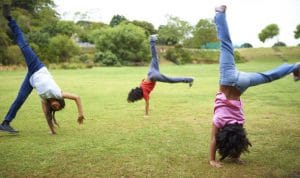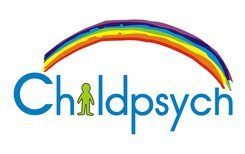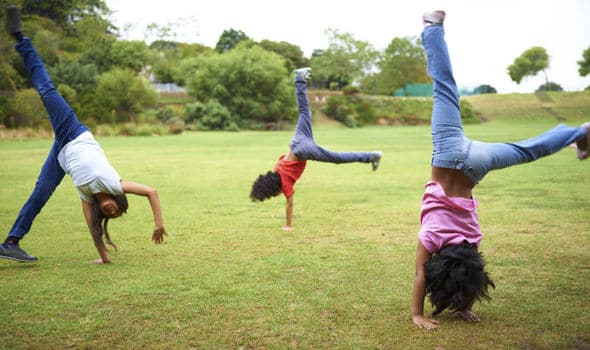 Motor development includes both fine motor and gross motor skills. When a baby spends a lot of time on their backs or stomachs, it helps to develop their coordination, balance, and muscle strength. And after a lot of concentration and practice, babies will be able to reach and grasp objects, roll over, sit up and follow a moving object with their eyes, among other things. Your child will keep enhancing their motor skills until they can perform very complex movements later on. Here is how this development proceeds in babies:
Motor development includes both fine motor and gross motor skills. When a baby spends a lot of time on their backs or stomachs, it helps to develop their coordination, balance, and muscle strength. And after a lot of concentration and practice, babies will be able to reach and grasp objects, roll over, sit up and follow a moving object with their eyes, among other things. Your child will keep enhancing their motor skills until they can perform very complex movements later on. Here is how this development proceeds in babies:

Sitting and Reaching
You baby might be sitting on a rug, looking at a toy that is just out of her reach. She leans over, picks up the toy, and plays with it. Her back muscles have developed enough to provide stability while sitting. Now she can shift her weight, reach across her body and grasp an object. Soon she will push herself forward onto her hands and knees.
Cruising and Standing
Yesterday I watched a one year old sitting on a rug, busily pulling a puzzle apart. She saw one of her friends sitting comfortably on a couch, and wanted to join the fun. She grabbed onto the sofa, pulling herself to standing, and cruised along the edge moving toward her friend. Practicing standing unsupported helps to increase the strength and control in her back and legs. Soon she’ll be ale to push a toy pram across the room. And finally, she’ll take her first steps.
Walking Is Powerful!
It is a big deal when a toddler begins to walk independently. Finally they are able to move from one object to the next, exploring the world on their own! Yet children will also needs to know that a caring adult is nearby to provide encouragement and security.
A Supportive Environment
The physical environment plays a key role. There should be open spaces so infants can roll and early walkers can toddle without bumping into things. A sturdy chair with arms helps the toddler learn how to get in and out of the sitting position.While swings, steps and ramps help them understand spatial relationships and how to move themselves up and down.
What You Can Do to support motor development at this age:
- Play chasing games to encourage movement.
- Provide soft music to encourage listening and moving. (We love majors for minors!)
- Make toddler obstacle courses with pillows or baskets, which the child has to walk around.
Ages 3 to 4
Two four-year-olds, enthusiastically grab a ball, then quickly set up two toys to create a goal post. At first, they take turns, running fast and kicking the ball forward toward the goal. Then they practice stopping the ball with their feet and passing it back and forth before aiming for the goal again. After watching others play, a third toddler decides to try. She kicks the ball towards the goal posts and laughs as it hops along.
Setting Their Sights on Skills
Preschoolers love to use pretend play to mimic the athletic activities of their big brothers and sisters, or the players they see on television. Such play enhances their emerging skills, and it’s only natural that 4-year-olds who can run fast, come to quick stops, and move easily around obstacles, like to practice fancy footwork with a soccer ball.
They enjoy games that require quick gross motor reactions. Constantly on the move, they will later zoom away on their “super chrome machines,” or tricycles. They’ll use their arms to steer and go around turns and corners with great confidence. Four-year-old boys, in particular, love participating in bold, high-energy, outdoor activities with their friends.
Developing Fine Motor Skills
It’s important not to frustrate three-year-olds with activities that require too much concentrated hand-eye coordination. As their fine motor skills develop, however, they will be able to handle a wider range of physical manipulations, such as holding a crayon between two fingers and a thumb while drawing shapes.
Three-year-olds may still wish to cover an entire piece of paper with large paint strokes, but their improved hand-eye coordination helps them see and stay within the paper’s boundaries.
They also enjoy patting, splatting, squeezing, and moulding play dough and damp sand for fun or making simple things like mud pies and spaghetti.
What You Can Do
Get children moving! Sing action songs to help make transitions easy. Pick up and carry the blocks during clean-up. Vigorously scrub the tables with soapy sponges before and after snacks.
Offer a wide range of gross motor equipment. You can use different items to strengthen the arm muscles and keep children interested.
Adapt materials. Offer items appropriate for different skill levels so children feel challenged but not frustrated. To encourage ball-handling skills, for e.g., provide a basket of balls that offer children choices-a big rubber ball, a Nerf football, a fluffy pom-pom ball, light Ping-Pong balls.
Ages 5 to 6
A quick look around s group of children this age, will show just how much children have grown and changed this year. They have all grown in size and skills, and now most are ready for first grade. It can be hard to believe how much help they needed with such simple things as dressing at the beginning of the year, and how independent and capable they are now.
Children go from having very simple physical abilities to very complex ones in just one year. Learning to snap their fingers or swing hand over hand on the monkey bars is a huge achievement for them.
From Preschool to Big School
Children tend to stretch out in size, moving with a mature stance and gait. When it comes to large-muscle development, pre-schoolers might even look different at this point in the year. The wider (and more confident) steps of a child who is getting ready to move up to the “big school” replace the little steps of the early years.
Developmentally, most pre-schoolers can now skip, catch and throw a ball, hop and balance on one foot, ride a small bike, and walk down stairs alternating their feet. Their confidence in their physical skills makes five- and six-year-olds interested in games like hopscotch and jump rope, and in sports like rugby and swimming.
This is also a good time to introduce children to non-competitive physical activities, which are ideally both challenging and supportive.
Making Brain Gains
Research has shown that exercising large-muscle groups is good for the brain. Children who swing their arms independently and cross them from one side to the other are actually balancing both the right and left side of the brain. Evidence suggests that these increased activities have a strong effect on a child’s ability to learn. Active sports and games oxygenate the blood and feed the brain.
Small Is Big
Now is a time when the improvement and mastery of small-muscle skills has a big impact on children’s success in school. Many of the tasks ahead require the same small-muscle skills. As children move to the world of pencil and paper, they need to be able to hold writing implements and to cut, draw, and write.
Happily, all the wonderful hands-on experiences they have received, perfectly prepared them for these tasks.
Supporting the Whole Child
The big step from pre-school to first grade takes much more than physical readiness. Some children may have developed both large and small muscles but are not emotionally or cognitively ready. It is the whole child who steps through that door to first grade.
It’s up to teachers to help parents realize that their newly grown “big kid” has to be “big” on all levels to succeed in first grade.
What can you do?
- Invite your family or friends to share in games and activities that demonstrate just how much your child have grown.
- Create a yearbook with your child’s self-portraits and musings about how he/she have grown this year.
- Photograph your child participating in physical activities and create an “I Can Do It!” album.
For more information about the development of fine motor skills or to book a consultation, contact Anel at anel@childpsych.co.za.

